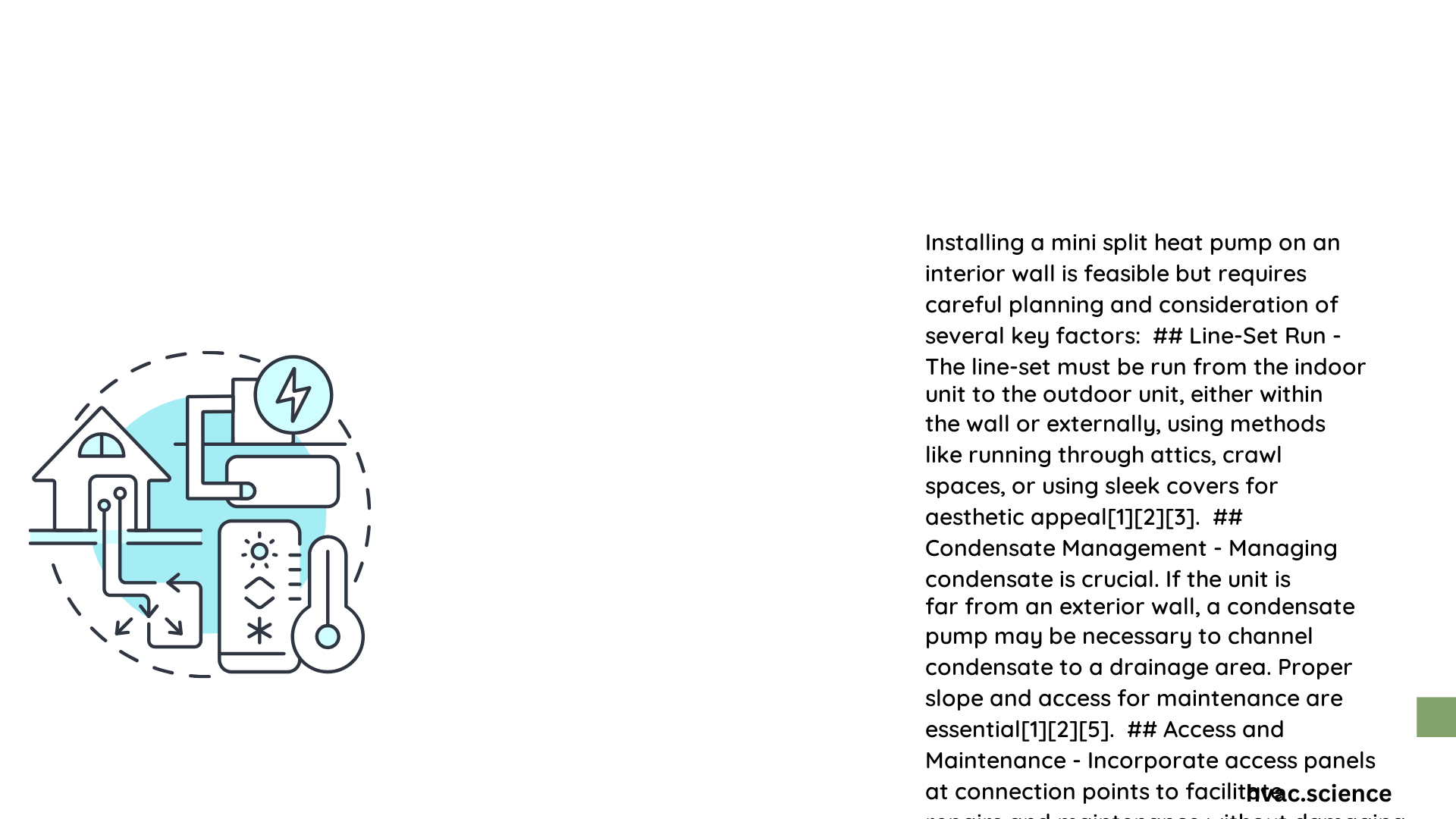Mini split heat pump interior wall installation requires precise planning and technical expertise. Homeowners and professionals must carefully consider wall structure, load-bearing capacity, mounting techniques, and thermal performance to ensure efficient and reliable heating and cooling. The right approach can transform your space’s comfort while maintaining aesthetic appeal and energy efficiency.
What Makes Mini Split Heat Pump Interior Wall Installation Critical?
Mini split heat pump interior wall installation is more than just hanging a unit on a wall. It involves strategic placement, structural considerations, and technical precision that directly impact system performance and longevity.
How Do You Select the Perfect Wall Location?
When choosing a mini split heat pump interior wall, consider these key factors:
- Structural Integrity
- Wall must support unit weight (approximately 23 lbs)
- Prefer walls with solid stud backing
-
Avoid weak or damaged wall surfaces
-
Airflow Considerations
- Mount 2-3 inches below ceiling
- Ensure minimum 3-foot clearance from electronic devices
- Avoid direct sunlight exposure
What Are the Essential Mounting Specifications?
| Specification | Recommended Details |
|---|---|
| Hole Diameter | 2-3 inches |
| Mounting Height | 2-3 inches below ceiling |
| Minimum Clearance | 3 feet from electronics |
| Recommended Angle | Slight downward for drainage |
What Tools and Materials Will You Need?
Required tools for mini split heat pump interior wall installation:
- Drill with masonry bits
- Level
- Stud finder
- Wall anchors
- Mounting bracket
- Refrigerant line sleeve
- Sealant
- Measuring tape
How Do You Prepare the Wall?
Preparation steps include:
- Locate and mark wall studs
- Check wall’s load-bearing capacity
- Verify insulation quality
- Clean installation area
- Ensure proper electrical connections nearby
What Are Common Installation Challenges?
Potential challenges during mini split heat pump interior wall installation:
- Thermal bridging
- Inadequate wall support
- Improper drainage
- Electrical compatibility
- Refrigerant line routing
How Can You Optimize Thermal Performance?
Thermal optimization strategies:
- Use high-quality wall insulation
- Seal refrigerant line penetrations
- Choose walls with minimal external exposure
- Consider additional insulation around mounting area
What Maintenance Considerations Exist?
Regular maintenance recommendations:
- Annual professional inspection
- Clean air filters quarterly
- Check mounting bracket stability
- Inspect refrigerant line seals
- Monitor unit’s performance
Conclusion

Successful mini split heat pump interior wall installation requires careful planning, technical knowledge, and attention to detail. By following professional guidelines and understanding critical specifications, homeowners can achieve efficient, reliable heating and cooling solutions.
